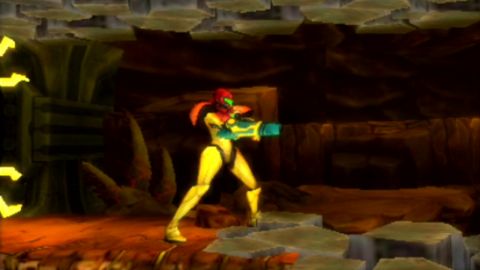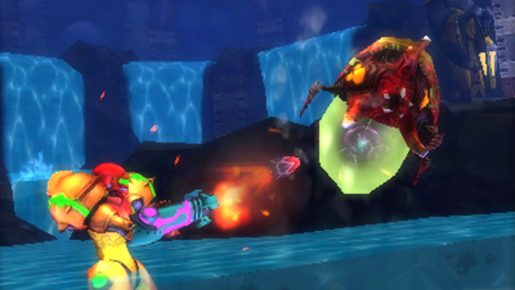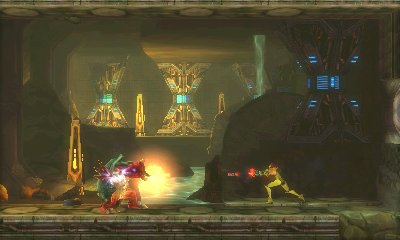Fans fear a lot of things in regards to their favorite franchise. A new direction, retcons/reboots, spinoffs and most importantly, the eventual end. Over the years Metroid has faced most of these things and managed to remain strong. Sure, Metroid: Other M and Metroid Prime: Federation Force are better left forgotten, the Metroid Prime trilogy is one of the most celebrated changes in franchise direction. Despite the praise, it looked like Nintendo gave up on the franchise. With years of silence between Metroid: Other M and Metroid Prime: Federation Force, Nintendo revealed the often requested Metroid Prime 4 and Metroid: Samus Returns, a reimaging of Metroid II: Return of Samus. With improved visuals, amiibo support and the benefit of a second screen, is Metroid: Samus Returns a return to form or a desperate attempt of cashing in on the franchise?
Taking place after the events of Metroid, Samus arrives on a distant planet with the intention of wiping out the remaining Metroids. At first this looks to be easy, but the formerly simple enemies have changed and appear behind a number of puzzles, making for a thrilling adventure.
After watching a brief explanation of what happened in Metroid and introduced to the basic elements of the story, the world starts to open up. True to the metroidvania genre, there might only be one or two ways forward, with a number of paths that can be explored at a later time. This makes exploration a lot of fun, as there is a sense of wonder to each puzzle. Seemingly complicated puzzles are solved by simple mechanics, such as bombs while rolling, charged blasts or just different elements.
How well you pay attention to your surroundings and world will have a direct impact on how many puzzles/secrets you find. The ability to scan the local area for alternate routes will often help solve puzzles, locate secrets or just give players an idea of what’s to come. All of these things work very well with the second screen.
Like a lot of games, Metroid: Samus Returns benefits greatly from the second screen. Instead of hiding it in a menu or cluttering the screen, a map is always visable on the bottom, filled with helpful icons or possible paths, assuming you use the radar skill, making the experience accessible without the need for a guide. Instead of having to search for the solution, most can be solved by looking at the map, seeing possible directions and looking for secrets. Sure, it takes a little away from finding them, but it’s good for anyone who wants to play without the need of a guide.
The item descriptions also do a good job of this. Take the freeze weapon. This is one that leaves enemies open for attacks or can be used as a platform. The latter is likely something you won’t try, where as the description mentions it. By paying attention to this, new locations can be found, without the need of additional resources.
For all Metroid: Samus Return does right, there are still some rough patches. One such problem are the controls. Instead of having more fluid controls, they often feel rigid. Pushing down causes Samus to crouch useful for shooting enemies on a lower level, but once you’re in that position you’re basically locked into place. Moving up will cause her to stand, with another push down changes her into the ball form. Using the spider skill requires the L trigger to be held, an awkward positon while holding a 3DS, with some of the more intricate moves causing similar problems. Some of these issues have more to do with the system than the game, though, for a reimagining, it could’ve been handled better.
Another common annoyance is having to look at screens for too long. When you gain a new skill, ability, more rockets/health or things of the like, there screen indicating this remains for a good four or five seconds. It’s just long enough to be annoying. The long length also encourage ignoring the data, as it’s there for so long you might glance away or just skip the explanation, making it harder to progress or forcing players to return to figure out the puzzle.
Verdict
Metroid: Samus Returns might not be perfect, as it has one of the most sinister uses of amiibo to date, but it’s the perfect game for the 3DS. The second screen makes it easy to navigate through the world, with plenty to see, find, explore and overcome. While the controls could be better, something that is largely a 3DS problem, they’re not enough to ruin the overall experience. Sure, there is a period of getting use to them, something that isn’t uncommon for Nintendo games, leaving fans and newcomers the chance to experience one of the better Metroid experiences.
[Editor’s Note: Metroid: Samus Returns was reviewed on 3DS platform. The game was provided to us by the publisher for review purposes.]



